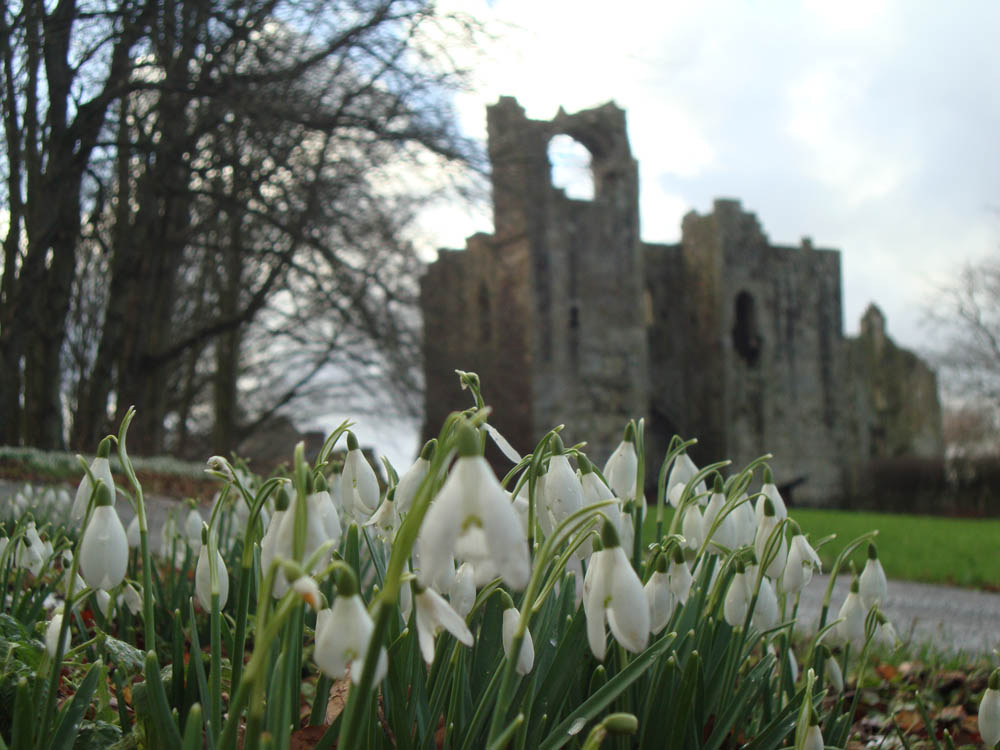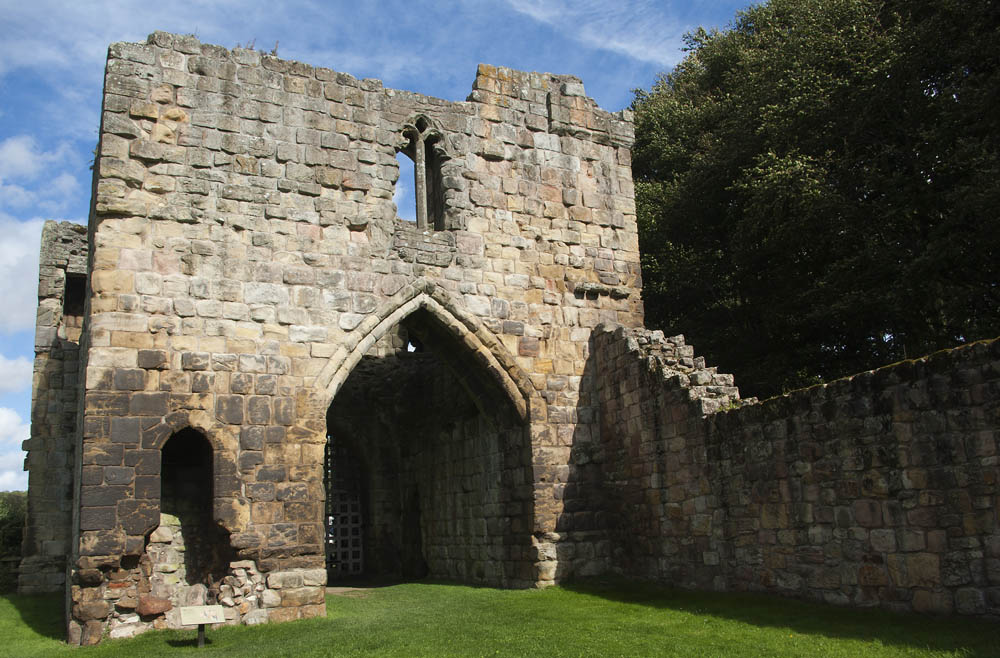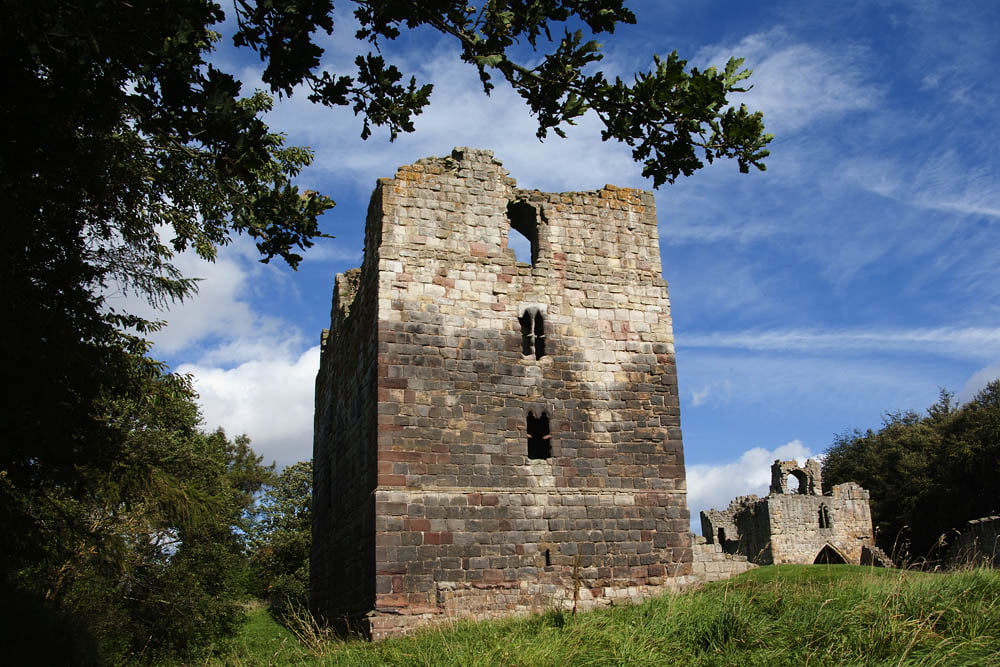
Looking towards the lower end of the picturesque village of Etal, it is possible to glimpse a turbulent past at odds with the peace and tranquillity that reigns today. The ruined remains of Etal Castle tell the story of Border warfare and of a medieval feud.
After the Norman Conquest, Etal and the surrounding borderlands made up part of the Barony of Wooler. Probably as a reward for their continued loyalty, Etal lands were granted to the Manners family in the 13th century. Though perhaps difficult to imagine today, the Castle must have once been prominent as it was chosen by the Archbishop of York as a place to stay in 1291.
This area was considered a position of importance due to its position on the border and in relation to the River Till. Indeed, these were dangerous times for the borders and Robert Manners was granted licence to crenellate his manor house in 1341 – just 3 years after the Herons fortified Ford. It is likely that the Manners family were acting in direct response to their neighbouring rivals, with whom they had a long-existing feud.
Although it is not known when or why the feud between the Manners and the Herons originated, it certainly came to a head in the 15th century. In 1428, William Heron of Ford attacked Etal and was murdered in the battle that ensued. John Manners was forced to pay Heron’s widow 250 marks and provide for 500 masses to be said for his victim’s soul.
Etal Castle featured at the forefront of national events during the following decades, when it was captured in the days before the Battle Flodden in 1513 by James IV at the head of an army thought to be 60,000 strong. After their heavy defeat on 9th September, however, Etal was quickly retaken. Today, you can still see where English troops stored the captured Scottish artillery. But Etal Castle fell into disrepair soon after this, though military presence was also recorded here during the tensions arising from the Rough Wooing in 1549.


After the Union of the Crowns in 1603, Etal Castle completely lost its strategic significance. Ownership of the castle subsequently passed through many hands over the next 100 years but was eventually abandoned for good after nearby Etal Manor was built in 1748.
Available to see to this day are the ruined remains of a Tower House and Gatehouse as well as fragments of a curtain wall.
Etal Castle is managed by English Heritage. There are no entry charges and the ruins are open daily throughout the year: 10:00-17:00 April-October, 10:00-16:00 November-March. Closed: Christmas Day, Boxing Day and New Year’s Day.
switch website